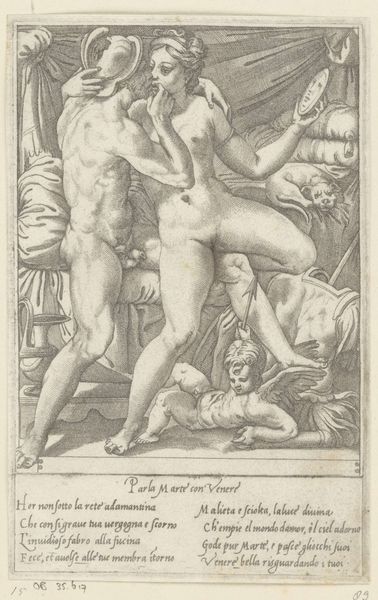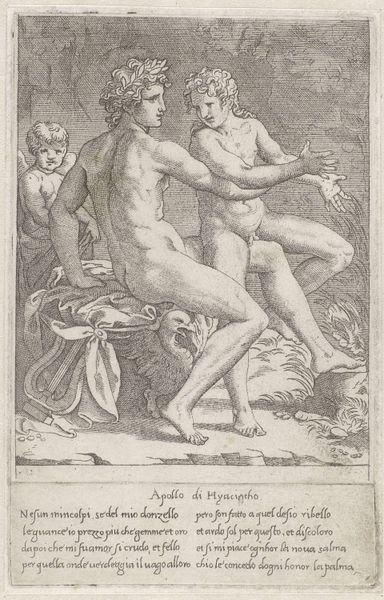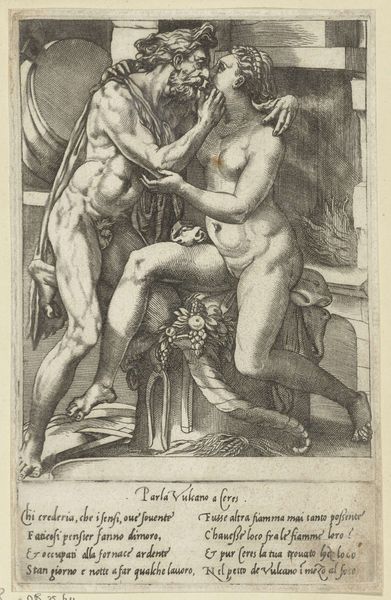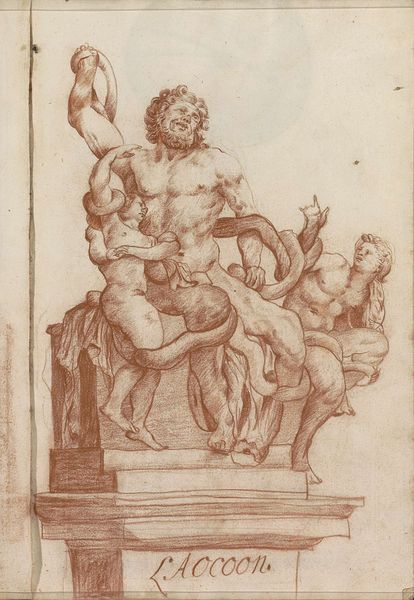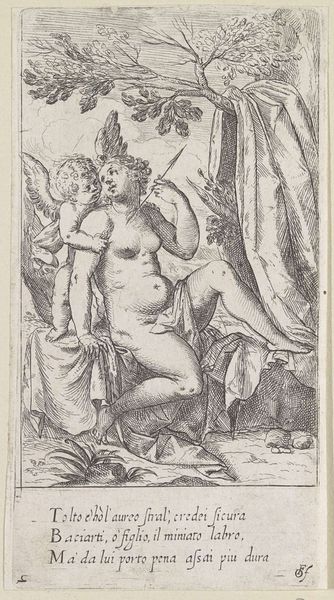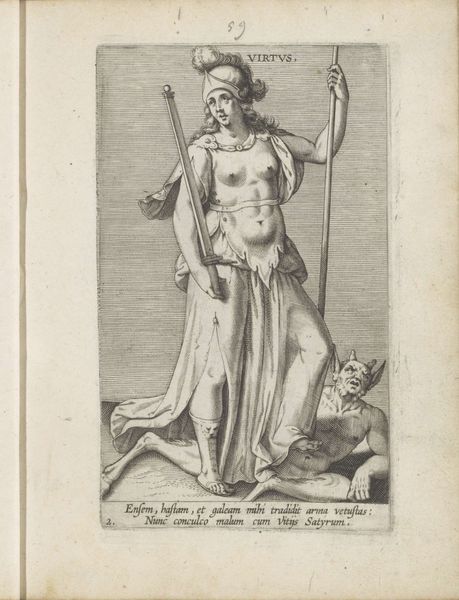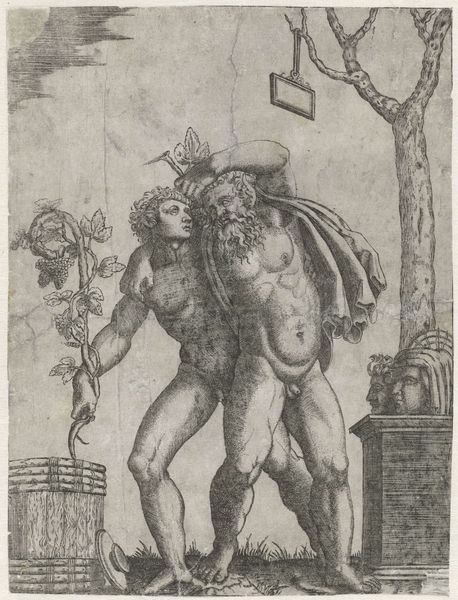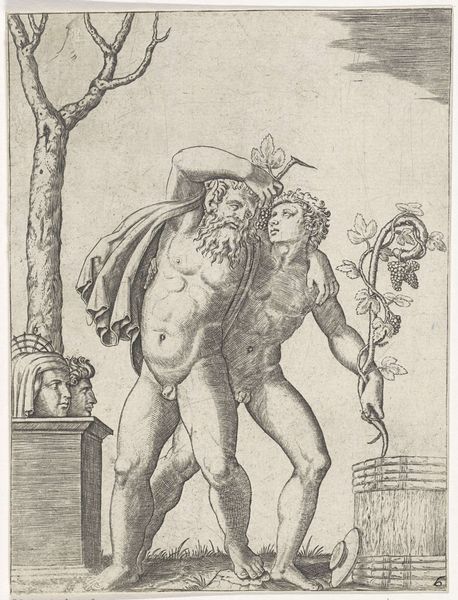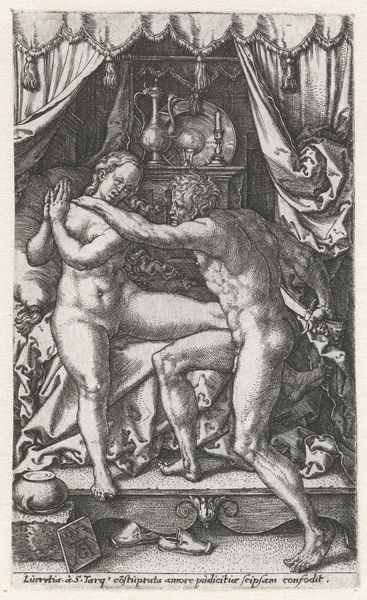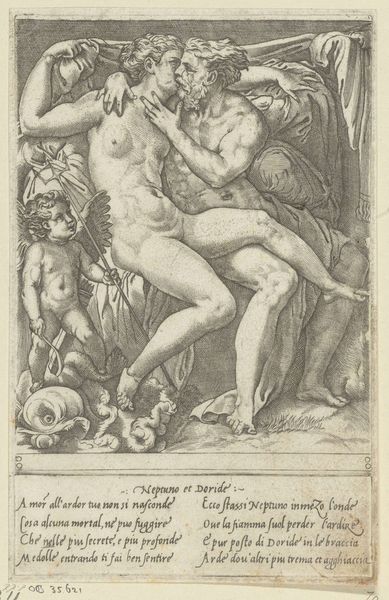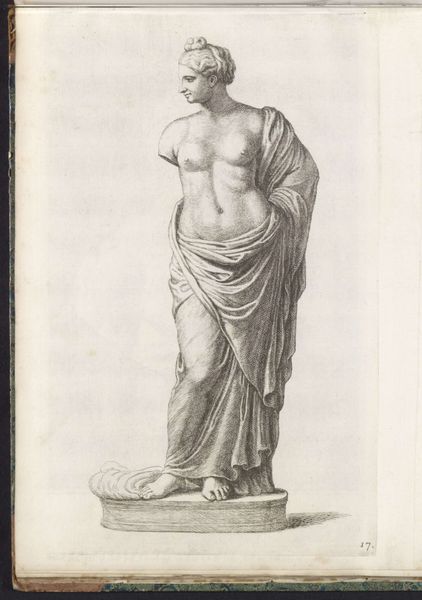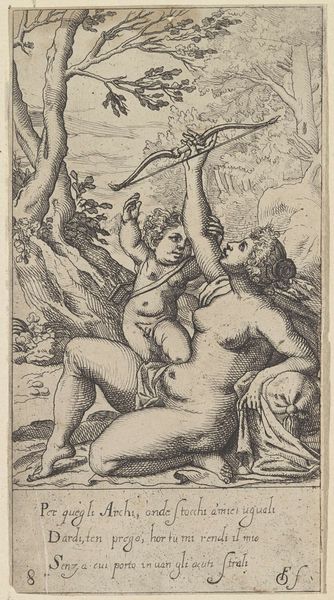
engraving
#
baroque
#
figuration
#
history-painting
#
nude
#
engraving
Dimensions: height 325 mm, width 204 mm
Copyright: Rijks Museum: Open Domain
Editor: So, this engraving is called "Sculpture of Bacchus, with Satyr and Panther" by Hubert Quellinus, dating back to sometime between 1646 and 1670. The detail is really captivating! I am fascinated by the ways Quellinus uses line to suggest texture and form. What do you see when you look at this piece? Art Historian: I'm immediately struck by the layers of meaning embedded in what seems, on the surface, a classical scene. We have Bacchus, the god of wine and revelry, attended by a satyr and a panther, standard iconographic companions, wouldn't you agree? But look closer... Consider the panther. It's not just a wild beast, but a symbol of Bacchus' power and exotic travels, representing his ability to transcend boundaries and civilize the uncivilized. Editor: That's interesting! I hadn't thought about the panther that deeply. What about the satyr? He looks…well, rather friendly with Bacchus. Art Historian: Exactly! The satyr embodies the primal, untamed aspects of human nature that Bacchus both celebrates and tames. Their closeness speaks to the intoxicating blend of order and chaos at the heart of Bacchanalian rituals. Consider too the era it was made; images like this, though referencing classical antiquity, served as potent reminders of pleasure, abundance, and the cyclical nature of life during times that were, for many, particularly bleak. Editor: So, it’s not just a picture of a god having fun? There’s something deeper? Art Historian: Indeed. Think of the vine motif intertwined within the stone itself. The grapes evoke themes of metamorphosis and transformation, reflecting the altered states of consciousness Bacchus represents. It urges us to question societal restraints while simultaneously embracing a life of ecstasy and artistic pursuit. Editor: Wow, I never would have considered so many layers! I'll definitely look at engravings differently from now on. Thanks for shedding light on all that imagery! Art Historian: It is the cultural memory contained within the symbolism which I find enriching. Perhaps now, others can see not just an image, but echoes of history, psychology, and the enduring power of myth.
Comments
No comments
Be the first to comment and join the conversation on the ultimate creative platform.
